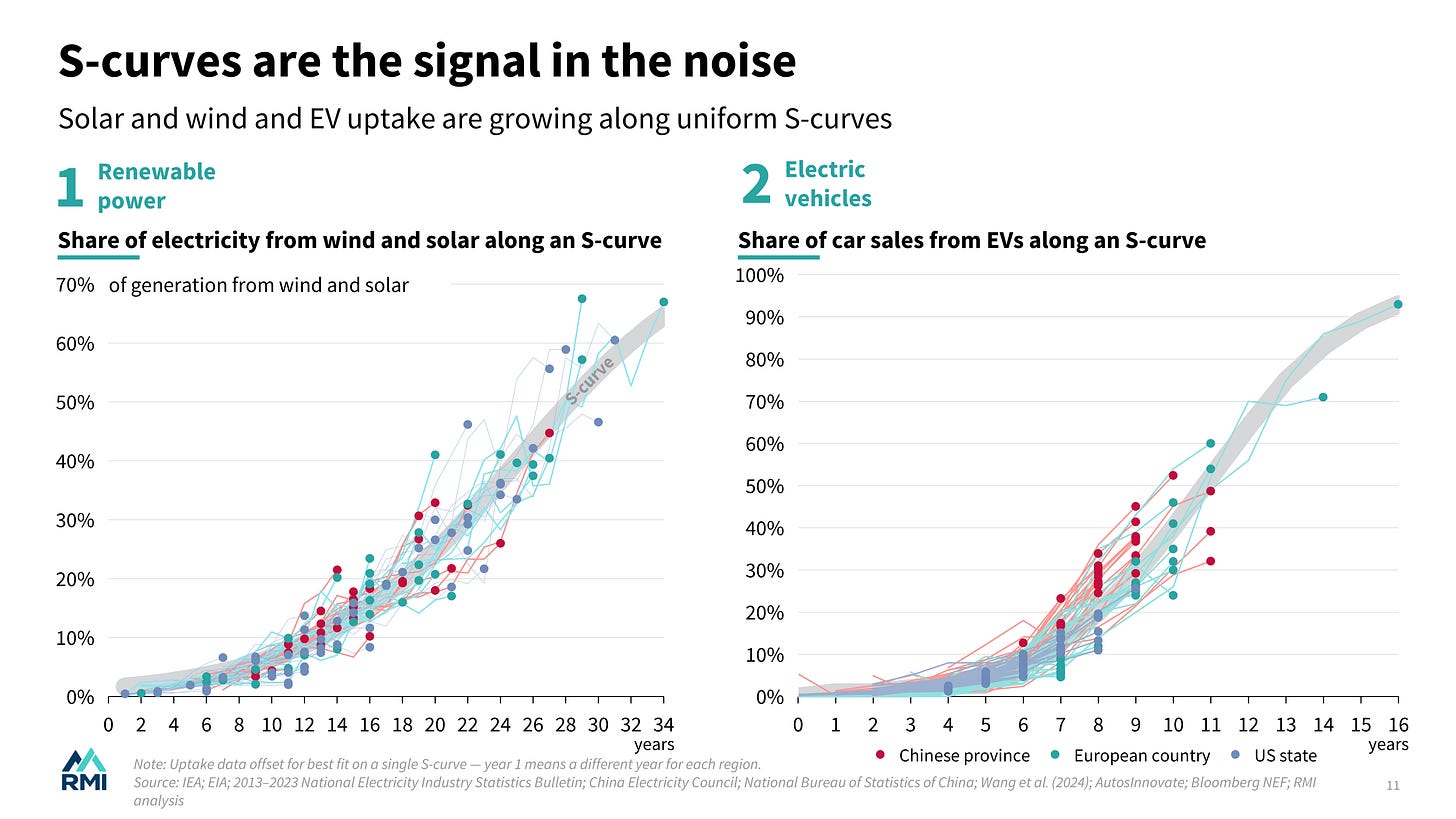Inside the Race to the Top
The race for cleantech among Chinese provinces, US states, and European countries
Cleantech has unleashed a global revolution, driven from the bottom up. Three major blocs — Europe, the United States, and China — are in a race to the top on cleantech. Yet, the real frontier of change lies within — at the country, state, and province level inside each bloc. The cleantech wave is coming, driven by market forces. Whether regions ride it to success or get dragged along depends on their choices.
The world is embracing cleantech. From Iowa to California, Qinghai to Zhejiang, and Norway to Greece, new cleantech leaders are rising fast.
A cornucopia of opportunity. We looked at the energy transition inside Chinese provinces, European countries, and US states: more than 110 territories in 13 regions. The largest, such as Shanxi, Texas, and Shandong, have more energy demand than Brazil or Indonesia.
There is a clear S-curve pattern in deployment. Solar and wind take 10 years to get to 5% deployment, 10 more years to get to 25%, and then 10 years to reach 50%. Electric vehicles take 6 years to get to 5% of sales and 6 more years to reach 50%.
The ceiling of the possible is far above our heads. In Northern Europe, EVs are 54% of total sales; Denmark and Iowa have solar and wind penetration of over 60%; electrification in Zhejiang and Guangdong is at 50%.
Catching up with the local leader will triple deployment. Solar and wind generation would increase by 3.5x, EV penetration by 3x, and electrification by 2x.
It’s not about wealth or politics. GDP is not the key determinant of cleantech penetration, and, in the United States, four of the top six states for the deployment of solar and wind are Republican states.
Leadership from opportunity and policy. Leaders come from places with huge renewable resources (South Dakota or Qinghai) or powerful policy direction (Germany or Zhejiang).
The electricity price is key. Countries that fail to reduce their electricity price struggle to electrify. Those that succeed get over half their energy from electricity.
Europe and the United States are failing to electrify. While Chinese provinces lead and are changing fast, electrification is the key area where Europe and the United States have fallen behind, with very little change in the past decade.
Most places import fossil fuels. Of the 110-plus territories, 85% import fossil fuels and could increase their energy security by embracing cleantech.
The deployment leaders. Northern Europe (Norway, Sweden) vies with Eastern China (Zhejiang, Jiangsu) in the deployment race, and the West (California, Colorado) leads the United States.
East and Central China dominate manufacturing. They host over 80% of solar and battery manufacturing capacity.
The United States has the greatest opportunity to deploy renewables. The United States has 43 times as much renewable potential as demand. New Mexico, South Dakota, and Kansas have solar and wind potential over 400 times their energy demand.
Local benefits mean local impetus for change. Territories that move fast unlock local economic growth and jobs, lower bills for consumers, better energy security, and improved public health. These strong local benefits provide ample incentive for bottom-up action.
The regional winners will put themselves on the map. This is a technology revolution — early movers will gain a virtuous circle of market power, lower prices, and rising economic activity, which will sustain wealth for generations to come. Laggards risk obscurity and decline.





Thank you for this. I love the simple, clear, brief format!